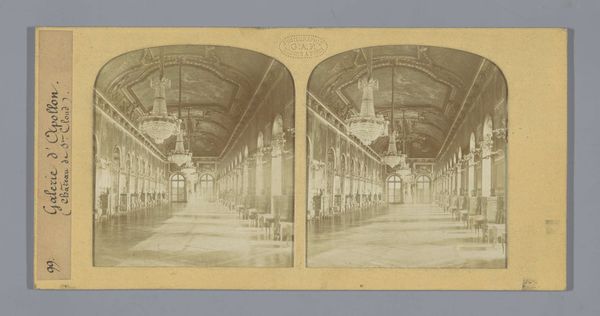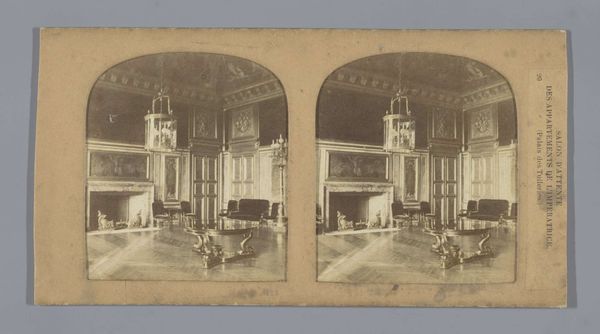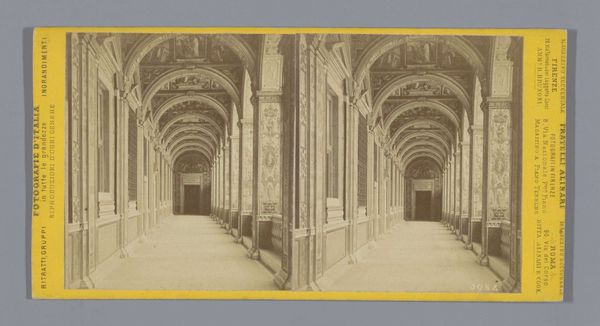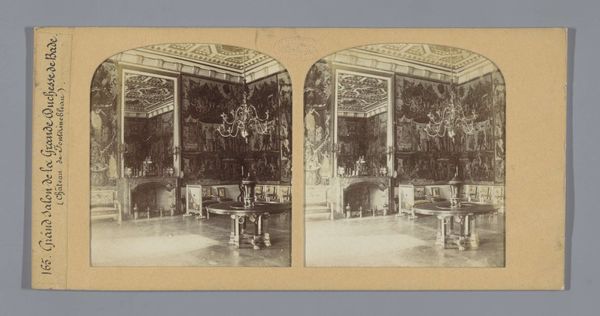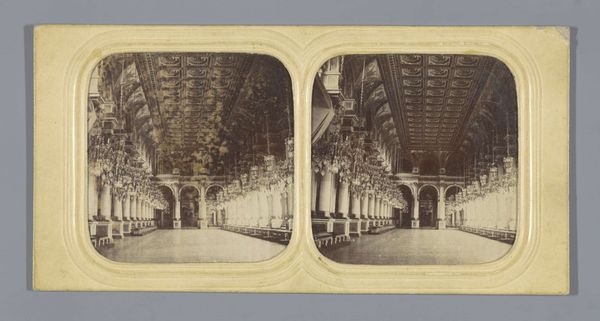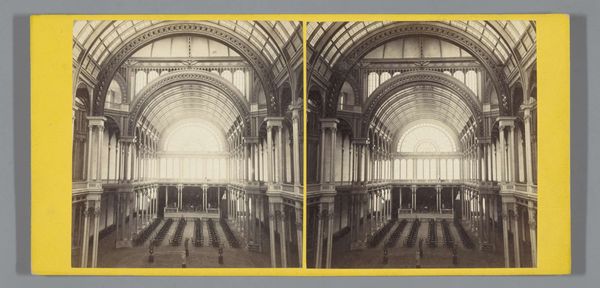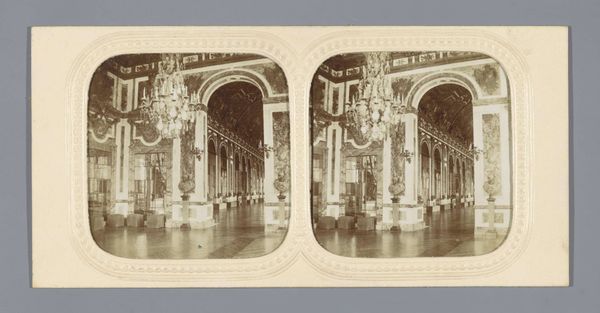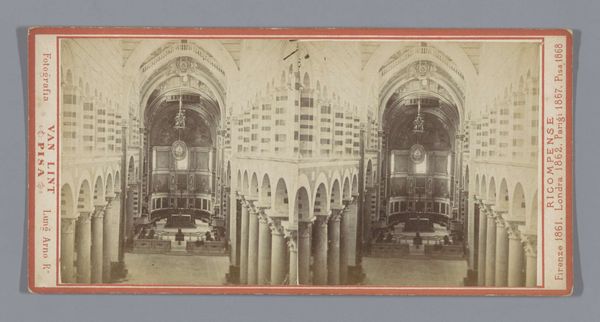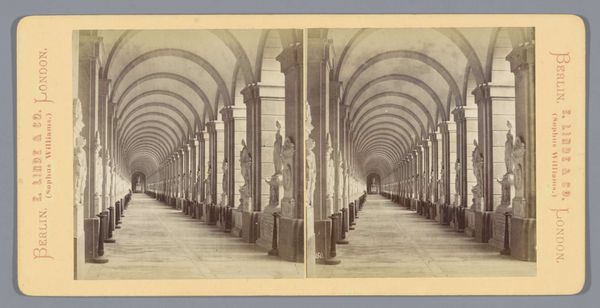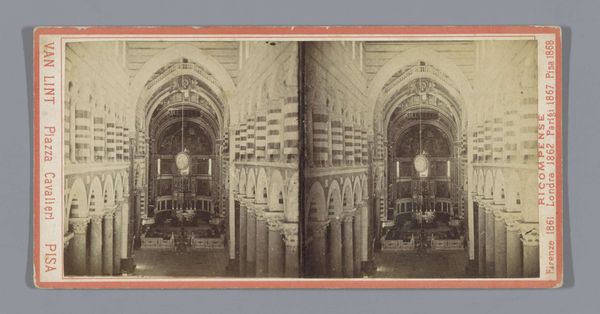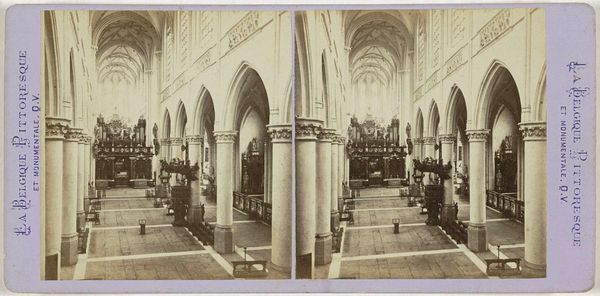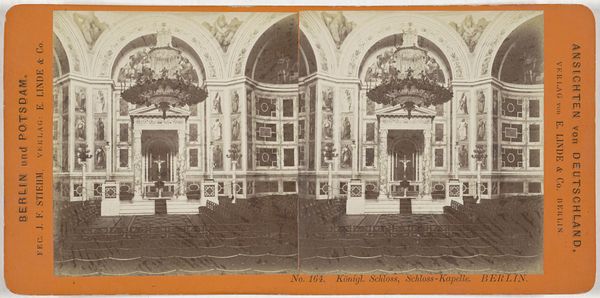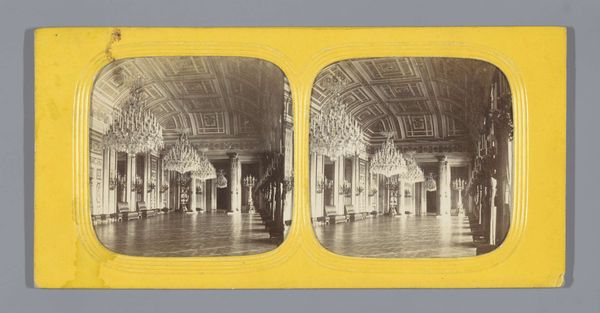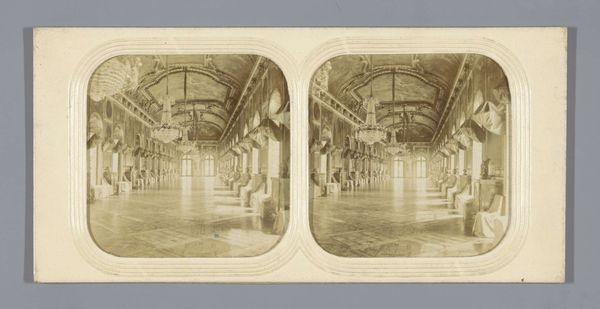
photography, gelatin-silver-print
#
photography
#
gelatin-silver-print
#
cityscape
Dimensions: height 83 mm, width 167 mm
Copyright: Rijks Museum: Open Domain
Curator: This is a gelatin-silver print from 1859, entitled "Bibliotheek van de Senaat in het Palais du Luxembourg, Parijs," that is, the Library of the Senate in the Luxembourg Palace. Editor: Immediately, the symmetry strikes me. It’s a double image, emphasizing the long, arched space, creating a feeling of immense depth. Almost overwhelming in its linearity. Curator: Indeed, there's a powerful resonance with the architecture of power, deliberately invoking Roman grandeur, which Napoleon III often deployed for the Second Empire. Libraries are always symbolic places—storehouses of collective memory. The fact that this one serves a Senate amplifies the image. Editor: Look at the play of light and shadow! The photographer masterfully guides our eye through the arches, pulling us toward the portraits within. But it also obscures, hiding detail and adding a sense of mystery. What truths, and perhaps deceptions, are concealed within this architectural representation of power? Curator: This interplay reveals not only technical mastery of the gelatin-silver process but also suggests the weight of history, how shadows are intrinsically intertwined with the enlightenment found in these great institutions. Light always reveals and conceals simultaneously. Knowledge offers its own types of obscurity. Editor: Precisely! Semiotically speaking, the long tables and carefully placed chairs—so still, so expectant—create an atmosphere of quiet authority. An invitation into the pursuit of knowledge—but only on the Senate's terms. Even the tiled floor participates; the subtle shift in tones leads the eye like musical notation across a stave. Curator: Absolutely. These spaces become potent symbols of access, control, and the codification of knowledge itself, particularly through institutions that seek cultural continuity over generations. It reminds us that institutions reflect—but also actively shape—our collective story. Editor: In closing, it seems Grau is more than a documentarian, isn’t it? With its carefully cultivated light and rigid geometries, he delivers a profound meditation on the architectural frameworks that shape power and history. Curator: Precisely. What a space this Library holds in the collective French psyche. Hopefully the sound of the books will one day outnumber the sound of political arguments.
Comments
No comments
Be the first to comment and join the conversation on the ultimate creative platform.
